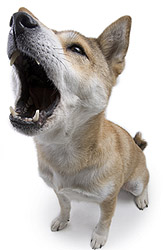In this blog entry, I will be summarizing the important terms and concepts from our course text. (AKA any stuff that I thought was interesting, looked important, or think will be needed later in this class) All future blog entries that are similarly titled will be about the same book.
Sturken & Cartwright,
Practices of Looking: an Intro to Visual Culture, 2nd ed, Oxford Univ Pess, 2009
 tenkkay.deviantart.com
tenkkay.deviantart.com
Chapter 1 of Practices of Looking (PoL) involves Images, Power, and Politics. In the first section of this chapter, the authors described the importance, implication, and action of "looking." They followed this section by more sections in which they elaborated on "representation" in images, the myth of photographic truth, and images and ideology.
The things that I found most interesting in this chapter were:1. Representation- The authors write that "the material world has meaning... only through representations." This brought up the question: Do representations reflect the world as it is, or do we construct the world and its meaning through representations?
The answer to this, I believe, is entirely philosophical, and as such, I choose not to dwell on it. (In other words, I have no idea.)
2. The Myth of Photogenic Truth- The authors spend a long time discussing this in the text, and we spent a LONG time discussing this in class, so I can only assume that this must be somehow important. Essentially, this idea translates into "Are photographs really objective, as they are taken through mechanical means, and if so, can we take them as 'truth'?"
One side of the argument involving this question was that images that are mechanically or digitally recorded (photos, film, etc) can never be truly "objective", because there is always a person behind the product (ex: the photographer, the camera programmer/designer, the person who planned for that camera to be positioned where it is and the picture taken when it was). However, if I were to take this argument further, can
humans in general (or things produced by humans) ever be truly objective?
Important Terms:
1. Representation- use of language and images to create meaning in the world around us
2. Mimesis (pronunciation guide for the pronunciation impaired- like me- "mim-ee-sis")- imitation, idea of reflection
3. Positivism- holds that scientific knowledge is the only authentic knowledge
4. Roland Barthes
--studium- truth function of the photograph; joining of now (image) and then (event)
--punctum- ability of certain photographs to pierce the heart with feeling
5. Ideologies- systems of belief that exist within all cultures
6. Denotative meaing- literal, explicit meaning
7. Connotative meaning- culturally specific associations and meanings



 The picture above was one of the many featured in The Language of the Nude: Four Centuries of Drawing the Human Body exhibit at the Reed College's Cooley Gallery. This picture caught my eye with because of its loose and expressive linework, yet extravagant lighting and attention to detail. It became my favorite piece in the gallery, particularly for the extremely skillful highlighting which approaches dramatic chiaroscuro without the use of strong shadows. Overall, I thought this was a lovely and well-crafted piece.
The picture above was one of the many featured in The Language of the Nude: Four Centuries of Drawing the Human Body exhibit at the Reed College's Cooley Gallery. This picture caught my eye with because of its loose and expressive linework, yet extravagant lighting and attention to detail. It became my favorite piece in the gallery, particularly for the extremely skillful highlighting which approaches dramatic chiaroscuro without the use of strong shadows. Overall, I thought this was a lovely and well-crafted piece. This image portrays the literal meaning and the source of this sentence: A samurai fight. It adds relatively no meaning to the sentence.
This image portrays the literal meaning and the source of this sentence: A samurai fight. It adds relatively no meaning to the sentence.
 This image is somewhat different from the previous two in that instead of displaying an obvious literal interpretation of the quote, it makes the viewer draw his or her own conclusions. For example, one could interpret that the dog is the speaker of the quote or that the quote is a commentary on humanity's violence in comparison to the natural world represented by the dog. Or, the viewer may see only the dog and draw no conclusion between the two.
This image is somewhat different from the previous two in that instead of displaying an obvious literal interpretation of the quote, it makes the viewer draw his or her own conclusions. For example, one could interpret that the dog is the speaker of the quote or that the quote is a commentary on humanity's violence in comparison to the natural world represented by the dog. Or, the viewer may see only the dog and draw no conclusion between the two.